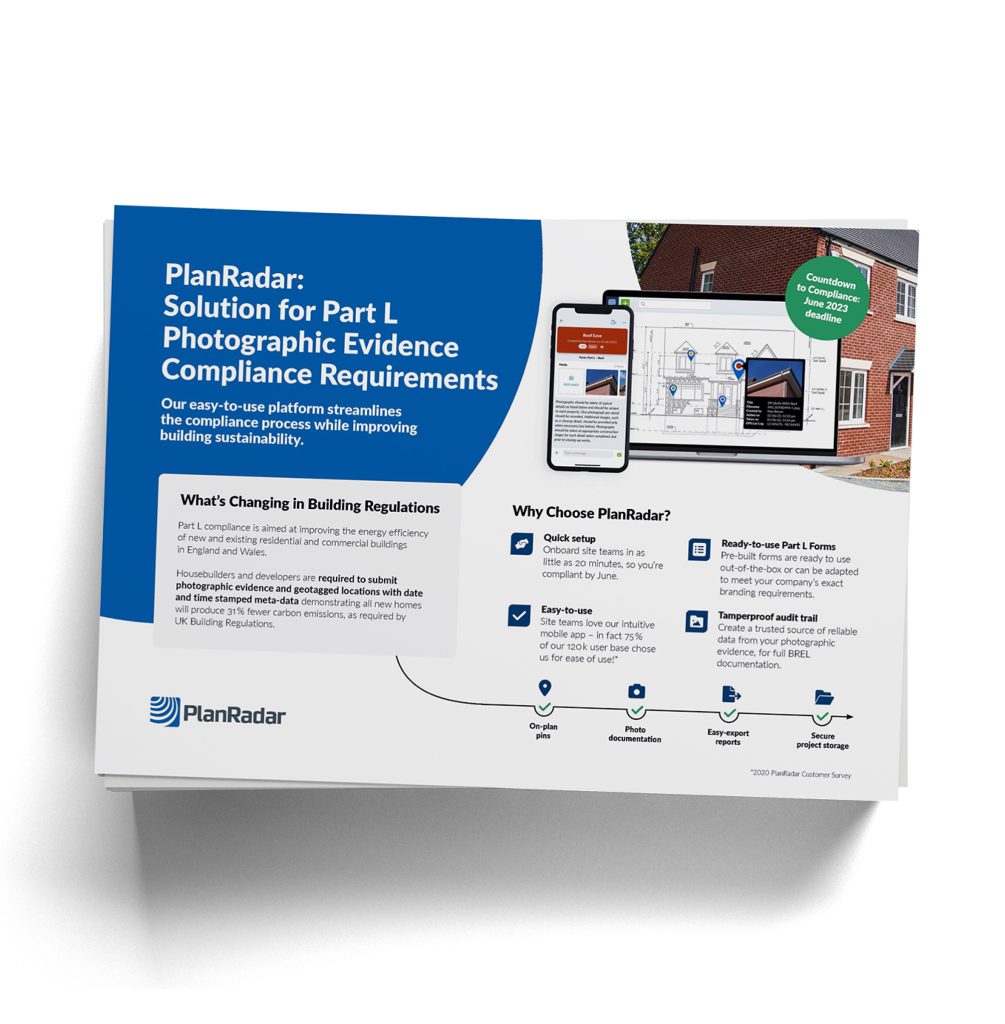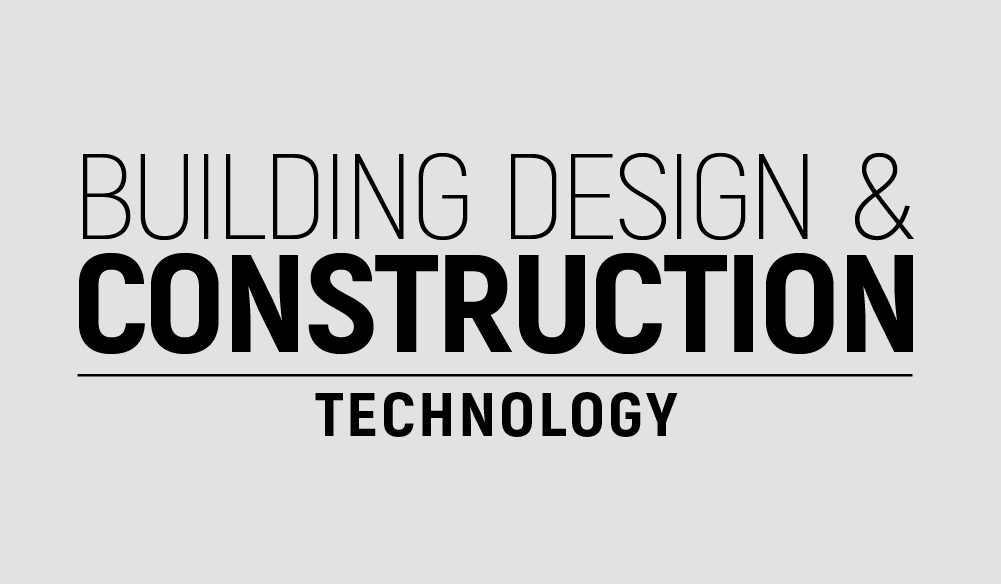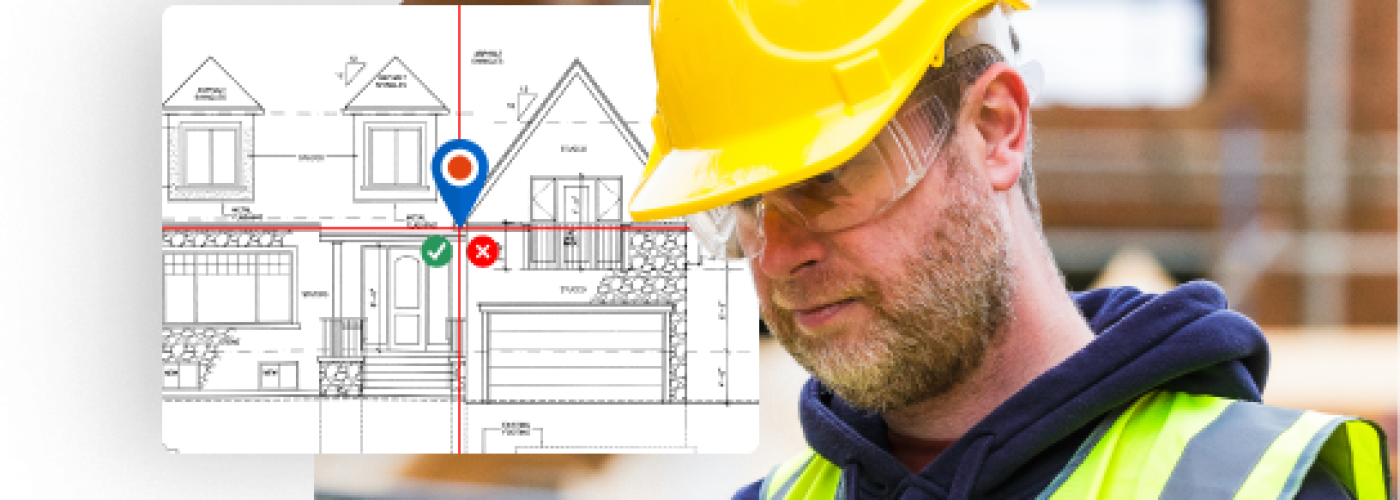By Rob Norton, UK Director at PlanRadar

The stark truth is, as it stands, there’s nowhere else for us to go. This isn’t just an environmental rallying cry, but a fundamental principle that underpins increasingly rigorous regulations to mitigate impact on the delicate balance of our planet.
The upgraded Part L is a strong foundation, outlining the minimum acceptable energy performance standards a new building must achieve. However, simply meeting these specified standards is no longer sufficient. Construction firms must also adhere to these regulations, and demonstrably prove compliance, directly contributing to a tangible reduction in their carbon footprint.
The limitations of traditional compliance methods
For far too long, the processes involved in evidencing Part L compliance have been characterised by inefficiency and potential for oversight. Reliant on nebulous paper-based documentation, manual data collection, and the inherent vulnerabilities of human error, these traditional methods struggle to provide the robust assurance demanded in today’s environmentally conscious landscape.
In an era where transparency and accountability are leading priorities, this outdated approach is no longer fit for purpose. We urgently require a more streamlined, reliable, and efficient system to meticulously track and document the energy performance measures implemented on construction sites.
The power of digital solutions
This is where the transformative potential of digital solutions enters the equation. Construction management platforms, for instance, present an unprecedented opportunity to revolutionise and significantly strengthen the entire process of evidencing Part L compliance.
Picture a scenario where every critical stage of the build that directly relates energy performance, is comprehensively documented with high-resolution photographic evidence, including: the precise installation of insulation materials, the meticulous fitting of energy-efficient windows and the accurate detailing of airtightness measures. This is then directly, and irrefutably, linked to specific locations within the building and precise project timelines. This isn’t a distant, futuristic concept, but an accessible reality that sophisticated digital platforms empower construction teams to achieve today.
Building a digital audit trail of compliance
By strategically using platform features like intuitive photo/video documentation, customisable digital forms, and real-time tracking, construction teams can seamlessly build a comprehensive, auditable record of Part L compliance throughout each project phase. This simplifies the often-arduous final handover process and provides a clear and organised compilation of all relevant evidence. It also offers irrefutable proof of compliance should any queries arise or inspections occur.
Enhancing collaboration and communication
Furthermore, these integrated digital platforms are powerful catalysts for enhanced communication and seamless collaboration across diverse project teams. Creating a centralised repository for all compliance-related information, they ensure that energy performance considerations are seamlessly integrated into every stage of the building process, from initial design specifications through to final sign-off. This helps to shape a culture of shared responsibility, ensuring all stakeholders are working from the same accurate and up-to-date information.
Gaining valuable insights for future sustainability
The benefits of adopting digital solutions extend beyond basic regulatory compliance. By establishing a clear, accurate, and easily accessible understanding of the specific energy-efficient measures implemented within each project, construction firms gain invaluable insights into their own operational practices.
The rich data captured by these platforms can be meticulously analysed to inform future projects, enabling organisations to identify areas for potential improvement, optimise their material selection processes, and further reduce their overall environmental impact. In a market increasingly driven by sustainability considerations, data-backed energy efficiency can serve as a substantial competitive advantage, attracting eco-conscious clients and partners.
A collective responsibility for a sustainable future
The urgent journey towards a truly net-zero future demands a concerted, collective effort across all sectors. Part L of the Building Regulations represents a vital piece of this intricate puzzle, setting essential standards for energy performance. However, the true and lasting impact of these regulations ultimately lies with our collective ability to effectively evidence and verify compliance with accuracy and transparency.
Digital solutions offer a powerful and readily available pathway to achieve this critical objective. They can equip construction firms with the necessary tools to meet current regulatory requirements and meaningfully contribute to the creation of a more sustainable built environment. After all, as there’s no planet B, embracing digital innovation within the construction industry is no longer a positive add-on, but a crucial and responsible step in safeguarding the planet.

Building, Design & Construction Magazine | The Choice of Industry Professionals





